Why do cars have seatbelts in them?
What purpose do they serve?
They are meant for keeping your body in place so that you do not get hurt if your car meets an accident.
So basically they hold your body in place, allow a certain degree of movement but when it comes to excessive forward movement of your body (that happens in car accidents usually), they do not allow your body to go beyond a certain limit.
So they are meant for safety purposes. Right?
Why am I telling you about seatbelts while I’m a personal trainer?
This is because our body does not compromise on safety and it has seatbelts too.
Yes, you read it right.
Your body has seatbelts too and they keep control of excessive motion at your body parts.
They are known as LIGAMENTS.
They are present everywhere in your body i.e. your neck, your back, your arms, your legs, your joints.
Every single ligament (like seatbelt) has a certain role to play i.e. to allow only a certain degree of motion and hence provides stability to your body.
Your knee joint has ligaments too.
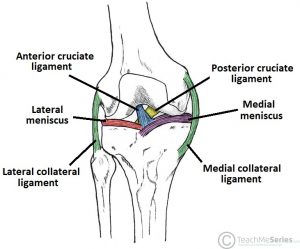
When we talk about knee joint, there are four important ligaments present in your knee joint which are as follows.
- Posterior Cruciate Ligament (PCL)
- Anterior Cruciate Ligament (ACL)
- Medial Collateral Ligament (MCL)
- Lateral Collateral Ligament (LCL)
We’ll be looking closely at PCL in this article.
What is Posterior Cruciate Ligament (PCL)?
Did you know that the posterior cruciate ligament (PCL) is a ligament that is present at the backside of your knee joint?
Your PCL is attached superiorly to your thigh bone (femur) and inferiorly to backside of your shin bone (tibia). (1)
Its main function is to hold your shin bone (tibia) in place and prevent its excessive backward motion at knee joint.
It also prevents excessive forward motion of your thigh bone over shin bone. (2)
This ligament’s role is most significant while your knee is in a bent position (flexed).
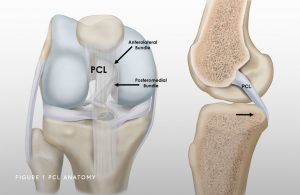
Just like a seatbelt holds you in place and does not allow your body to go forward, this ligament prevents your shin bone from excessive backward translation over the thigh bone.
Like every other structure in your body, PCL can get injured too if it is subjected to excessive stress.
Let’s look at the mechanism of injury of PCL.
How is PCL Injured?
Injuries of Posterior Cruciate Ligament (PCL) are not as much common as injuries of Anterior Cruciate Ligament (ACL). (3)
Posterior Cruciate Ligament (PCL) can be injured if excessive force is place on your shin bone (tibia) pushing it in a backward direction. It commonly occurs as a result of a forceful blow at the front of your leg (shin bone) while your knee is bent (flexed).
There can be either an isolated injury of PCL or injury of PCL combined with injuries to other ligaments of knee as well.
Three most common mechanisms on injury of PCL were reported by Schulz et al and they are as follows. (4)
- Dashboard Injury in motor vehicle accidents pushing knee in backward direction.
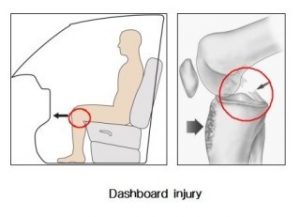
2. Falling on ground while knee is bent.
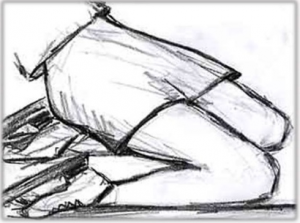
3. Sudden unexpected and violent bending on knee (hyper-flexion) of knee joint.
Whatever the mechanism is, if your PCL is injured, the stability of your knee joint is compromised.
- Have you recently come across such an injury followed by pain in your knee?
- Are you uncertain whether your PCL is intact or not?
Find out how to eliminate your knee pain starting now your FREE ONLINE CONSULTATION with the best PCL rehabilitation trainer in London, Jazz Alessi.
Symptoms of Posterior Cruciate Ligament (PCL) Injury
Did you know that symptoms of PCL injury vary with severity of injury?
An injury to PCL, like every other ligament, is classified into three categories:
- Grade 1 Injury: Minor damage to PCL involving microscopic tear of PCL.
- Grade 2 Injury: Macroscopic tear of PCL but the ligament is not completely torn.
- Grade 3 Injury: Complete tear of PCL.
Symptoms of PCL injury are not as clear as symptoms of ACL injury and they vary from patient to patient. The symptoms a person can present with are as follows. (5)
- Pain in and around your knee joint. (Intensity varies from mild to severe)
- Swelling
- Feeling of instability while knee is in bent position (Flexed)
- Difficulty in walking and weight-bearing
- Feeling of knee giving way
- Decreased range of motion
- Weakness in thigh and calf muscles.
After trauma, swelling usually occurs after several hours. But if blood vessels are involved, the joint can show swelling immediately. (5)
You should run to your doctor if your knee is swollen immediately following an injury. (I listed the injury mechanisms above).
Your body weight relies on healthy knees therefore; knee injuries are both dangerous and tricky.
- Do you have any of the PCL symptoms mentioned above?
You can successfully rehabilitate your knee with Jazz Alessi, – long-term exercise specialist and one if not the Best Knee Rehabilitation Trainer in London.
Diagnosing a PCL Injury
There are a variety of tests available to diagnose a PCL injury.
There are Physical Tests that are performed manually as well as Imaging Tests such as MRI.
WHICH PCL TEST CAN HELP YOU BEST
The most common sign associated with PCL injury is Posterior Sag Sign. (6)
- The client is asked to lie straight (supine) and bend his or her knee to 90 degrees.
- If your PCL is injured, there is downward displacement of your shin bone due to downward pull of gravity.
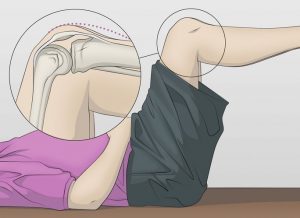
- When inspected from side, there is disappearance of Tibial Tuberosity (a palpable bony landmark just below your knee).

Beside Posterior Sag Test, Another test that is usually performed to check integrity of your PCL is Posterior Drawer Test.
- The client is asked to lie supine and bend (flex) his knee to almost 60 degrees.
- The person conducting the test sits in front of the patient and grasps his shin bone.
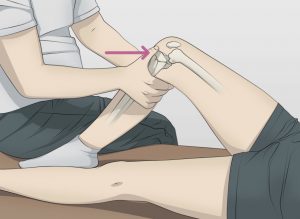
- A force is applied in antero-posterior direction (from front side to back side) and posterior displacement of shin bone is noted.
- This test is also performed on healthy knee joints for comparison.
- If there is significant posterior translation of your shin bone, your PCL is not intact.
Apart from Physical or Manual Tests, MRI is also performed to be sure about the ligament’s status.
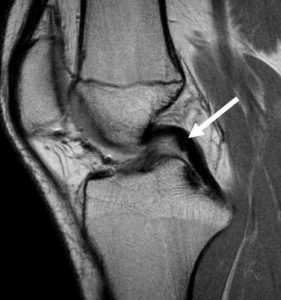
Whether we talk about Physical tests or Imaging tests, you’ll need an expert to evaluate the ligament’s status and the type of intervention (surgical or non-surgical) you need to boost your ligament’s recovery.
- Do you have any knee pains?
- You can’t run as you used to do?
- Are you perhaps limping or finding it difficult to go on the stairs?
If you’re looking to get rid of your knee pain, run without restrictions start now your FREE ONLINE CONSULTATION and Jazz Alessi, the Best PCL Rehabilitation Trainer in London will get back to you immediately.
Treatment Options for PCL Injury
Are you worried about your PCL injury?
Don’t be!
There are a variety of options available for managing a PCL Injury.
Grade 1 and 2 injuries of PCL (as listed above) can be managed conservatively (non-surgically) as well as surgically but Grade 3 injuries of PCL always need a surgical intervention.
Conservative management comprises of an Individualized PCL Rehabilitation Programme under the supervision of qualified injury rehabilitation professional.
Surgical options for PCL injuries include PCL reconstruction surgeries followed by an Individualised Rehabilitation programme.
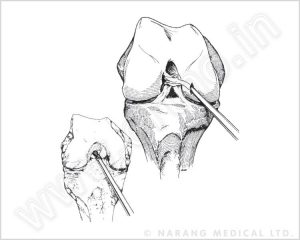 orthopaedic-implants.com
orthopaedic-implants.com
But there’s a good part.
What’s that?
Grade 3 injuries are very much rare.
So if you have recently injured your PCL somehow and are experiencing symptoms as mentioned above, you can either opt for a surgical option or a conservative approach.
- Are you confused about which option to choose for your PCL injury?
- Do you have a knee injury diagnostic?
- Why not clear your confusion from a Long-term Exercise Specialist who has been dealing with knee ligaments’ injuries from quiet a long time and that too for FREE?
Book your FREE ONLINE CONSULTATION now.
Non-Surgical Management of PCL Injury
Are you afraid of undergoing surgery for your PCL injury?
You don’t need to be.
PCL injuries (Grade 1 and 2) can be managed non-surgically if they are addressed by qualified person.
There are two main phases of management of PCL injury.
- Acute Phase
- Post-Acute Phase
Acute management of ligament injuries usually follows PRICE protocol. (7)
- Protection: Protect your knee joint from further injuries by appropriate gear or rest.
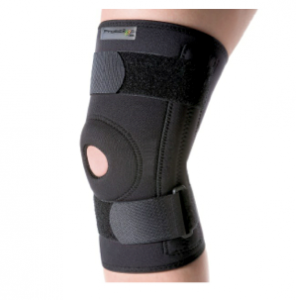
- Rest: Give your knee joint a period of rest so that your injured ligament is not under further stress.
Rest for adequate time is crucial in acute phase of ligament’s injury.
- Icing: Icing your knee joint helps in relieving pain. You’ll start feeling pain in and around your knee joint if you have injured your PCL or any other structure of in your knee joint and icing can help you relieve this pain for some time.
Icing can also help reduce the swelling present around your knee joint.

- Compression: Providing adequate compression around your knee joint in acute phase can help reduce swelling and can decrease your pain to some extent. (7)
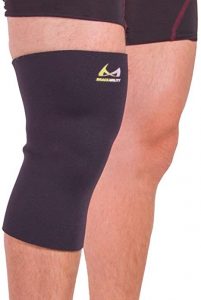
- Elevation: If you have injured your PCL or any other structure in your knee recently and your knee is showing is swelling, it is recommended to elevate your knee beyond your heart level.
This can help in reducing the swelling by assisting venous return from your knee.
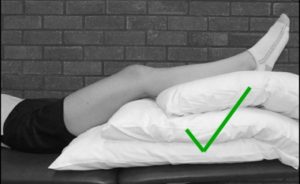
Rehabilitation Programme for Torn PCL
There are total 4 phases of customised rehabilitation programme for managing PCL injury. (5)
- Phase 1 : Maximum Protection Phase
- Phase 2 : Moderate Protection Phase
- Phase 3 : Minimum Protection Phase
- Phase 4 : Return to Activity Phase
Bear in mind that to each one of these phases there are time-length variations.
Phase 1 : Maximum Protection Phase
This phase usually lasts for 1 to 3 weeks.
You may feel following symptoms in your knee during this phase.
- Joint swelling
- Tenderness
- Decreased range of motion
What to expect from your PCL Rehabilitation Trainer in this phase?
Your trainer would provide you following interventions during this phase.
- PRICE protocol (as I mentioned above)
- Reduced weight-bearing on your knee (by crutches or rest)
- Gentle exercises
- Range of motion exercises
- Joint Mobilisation
- Aerobic Exercises

Phase 2 : Moderate Protection Phase
This phase lasts from 3 to 6 weeks.
Swelling and tenderness start to minimise and range of motion is of your knee joint is near normal.
This phase comprises of the following:
- Muscle strengthening exercises
- Aerobic Exercises
- Balance Training Exercises
- Stretching Exercises etc.

Phase 3 : Minimum Protection Phase
This phase usually lasts from 5 to 8 weeks.
Patient during this phase has:
- No joint instability
- No swelling and tenderness
- Near normal muscle strength
- Near normal activities
In this phase, main interventions are as follows.
- Advanced muscles strengthening exercises
- Advanced flexibility exercises
- Advanced balance training exercises
- Advanced aerobic training
- Running programme etc.

Phase 4 : Return to Activity
- This phase usually starts after 8 weeks and its time period varies from person to person.
- Interventions during this phase are completely individualized and it depends upon the activities of individual.
When we talk about options of any treatment or anything else in this world, everybody wants the BEST.
So when you are looking for PCL Injury Rehabilitation Trainers, do not compromise on quality.
Our body is the most precious thing we have and we must take care of it. Shouldn’t we?
- Are you looking for an Experienced Personal Trainer for your PCL Injury Rehabilitation Programme?
- Are you looking for someone having experience as well as caring attitude towards his clients?
You can book your FREE ONLINE CONSULTATION with Jazz Alessi, a qualified exercise specialist who can help you get rid of your pain and boost your recovery.
What are you waiting for?
Best PCL Rehabilitation Exercises
When we talk about Exercises for PCL tears, you must know that exercises should be avoided in the acute phase of injury (We talked about it in above sections).
Exercises are crucial and they help your body in many ways.
- They help to maintain your normal range of motion
- They prevent your joints from getting stiff.
- They enhance your blood flow.
- They have positive effect on your heart.
Below are few simple exercises for your PCL rehabilitation that you can easily perform at home.
1. Quad Sets
This exercise focuses on muscles present on front of your thigh (Quadriceps).
- Sit on floor or bed with your involved leg in straightened position.
- Place a small or pillow or rolled towel under your knee.
- Try to straighten your leg and hold it for few seconds followed by relaxation.

2. Straight Leg Raises (SLR’s)
This exercise focuses on extensor muscles of your lower limb.
- Lie down on floor or bed.
- Lift your leg up by keeping your knee straight.
- Hold the end position for few seconds followed by relaxation.
- Slowly return to starting position.
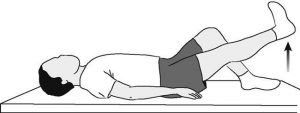
3. Wall Squat
This exercise targets muscles present in your thigh.
- Stand near the wall (Back facing towards wall)
- Place a gym ball in between your back and the wall)
- Slowly go down by bending your knees.
- Keep going down until your knees are bent to 90 degrees.
- Slowly return to your starting position.
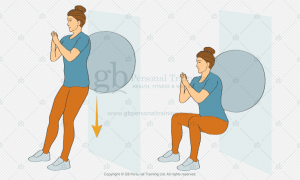
Picture source: gbpersonaltraining.com
4. Step Up
This exercise focuses on muscles of your leg and buttock.
- Stand tall in safe environment.
- Place a stool in front of you.
- Place foot of your involved leg onto the stool.
- Straighten your knee so that your body is lifted off the floor.
- Hold for few seconds and then gradually return to your original position.
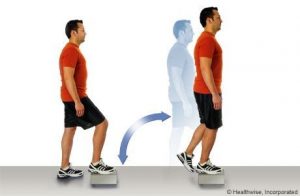
5. Heel Slides
This exercise targets muscles of your thigh.
- Lie down straight either on floor or bed.
- Bend your knee while sliding your heel up towards your knees.
- Hold for few seconds and then slowly straighten your knee.
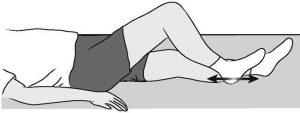
8. Prone Knee Bend
This exercise targets muscles present at backside your thigh.
- Lie on bed in prone position (on your belly).
- Slowly bend your knee by moving your foot towards your hip.
- Hold for few seconds and then gradually return to starting position.

You can perform these PCL Rehabilitation Exercises easily in your home.
If you’re looking for more such exercises and a successful rehabilitation programme for your PCL Injury, you can book your FREE ONLINE CONSULTATION with Jazz Alessi, a qualified rehab personal trainer having long term expertise in PCL Injury Rehabilitation.
PCL Rehabilitation Guidelines
There are few important points you must know if you are going to start your PCL Injury Rehabilitation Programme.
DO NOT BEND YOUR KNEE EXCESSIVELY!
- There is tendency of posterior slippage of tibia at higher angles of knee joint (which is usually prevented by intact PCL).
- It means that the more you bend your knee, higher the stress placed on your PCL.
- It is recommended to not bend your knee beyond 50 degrees in early phases of rehabilitation. (7)

DO NOT STRENGTHEN YOUR HAMSTRINGS!
- When your hamstrings contract (muscles present at backside of your thigh), a posterior directed force is placed on your tibia. (2)
- As you know that the role of PCL is to prevent excessive posterior translation of tibia.
- So it is recommended to avoid Hamstrings strengthening exercises in first few weeks of rehabilitation to avoid stressing your PCL.
AVOID OPEN CHAIN EXERCISES!
- Open chain exercises are those in which your feet are free to move.
- When you try to lift your leg up in air, gravity pulls your leg downward, hence stressing your injured PCL.
- Therefore, it is recommended to avoid open chain exercises during early days of rehabilitation. (7)
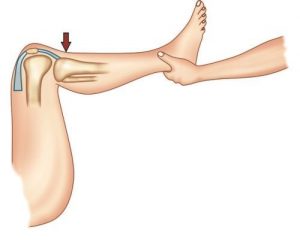 jaypeedigital.com
jaypeedigital.com
Whether you have injured your PCL recently or in the past, your knee’s stability is compromised. Moreover it becomes difficult after each passing day to carry out your normal daily activities without pain.
If you want a stable knee that is free of pain, you can start your PCL Rehabilitation Programme with Jazz Alessi.
Book your FREE ONLINE CONSULTATION now to clear your doubts about PCL Rehabilitation Programme.
REFERENCES
- Snell RS. Clinical anatomy by regions: Lippincott Williams & Wilkins; 2011.
- Moore KL, Dalley AF, Agur AM. Clinically oriented anatomy: Lippincott Williams & Wilkins; 2013.
- Vaquero-Picado A, Rodríguez-Merchán EC. Isolated posterior cruciate ligament tears: an update of management. EFORT Open Reviews. 2017;2(4):89-96.
- Schulz M, Russe K, Weiler A, Eichhorn H, Strobel M. Epidemiology of posterior cruciate ligament injuries. Archives of orthopaedic and trauma surgery. 2003;123(4):186-91.
- Kisner C, Colby LA, Borstad J. Therapeutic exercise: foundations and techniques: Fa Davis; 2017.
- Kannus P, Bergfeld J, Järvinen M, Johnson RJ, Pope M, Renström P, et al. Injuries to the posterior cruciate ligament of the knee. Sports Medicine. 1991;12(2):110-31.
- Comfort P, Abrahamson E. Sports rehabilitation and injury prevention: Wiley Online Library; 2010.



